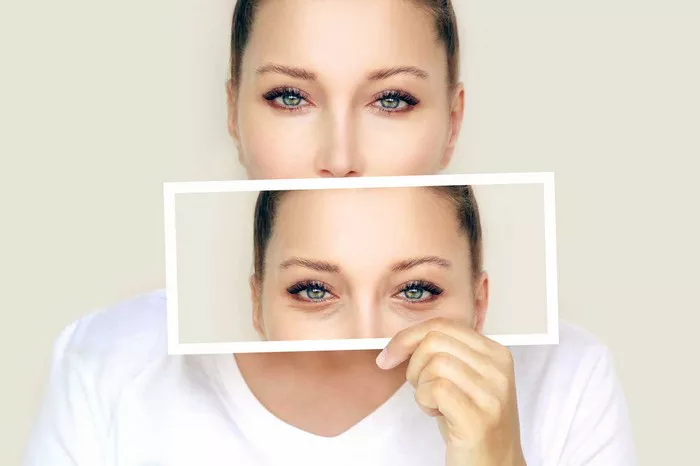Upper eyelid filler is a cosmetic procedure that involves injecting dermal fillers into the upper eyelid area to address concerns such as hollowness, volume loss, or asymmetry. This non-surgical approach aims to rejuvenate the eyes and provide a more refreshed and youthful appearance. While upper eyelid filler can be an effective treatment option, many individuals have concerns about its safety. In this article, we will explore the safety aspects of upper eyelid filler, including the risks, benefits, and important considerations.
Understanding Upper Eyelid Filler
Upper eyelid filler, also known as tear trough filler or upper eyelid hollow filler, involves injecting hyaluronic acid-based dermal fillers into the upper eyelid area to improve volume and address hollowness or sunken appearance. Hyaluronic acid is a substance naturally found in the body that helps maintain moisture and elasticity in the skin. By injecting hyaluronic acid fillers, the upper eyelids can be rejuvenated, restoring a more youthful and vibrant look.
The Safety of Upper Eyelid Filler
When performed by a qualified and experienced medical professional, upper eyelid filler is generally considered safe. Here are some factors that contribute to the safety of the procedure:
- Use of FDA-Approved Fillers: It is essential to ensure that only FDA-approved dermal fillers are used for upper eyelid filler procedures. FDA-approved fillers have undergone rigorous testing to ensure their safety and effectiveness.
- Qualified Medical Professional: Upper eyelid filler should only be administered by a qualified medical professional, such as a board-certified plastic surgeon, dermatologist, or ophthalmologist. These professionals have the necessary knowledge, training, and expertise to perform the procedure safely.
- Individual Assessment: Prior to undergoing upper eyelid filler, a comprehensive assessment should be conducted to evaluate the individual’s suitability for the procedure. This assessment includes a thorough medical history review, examination of the eye area, and discussion of expectations and potential risks.
- Proper Technique and Injection Depth: The injection technique used for upper eyelid filler is critical for safety. Precise placement and proper injection depth are crucial to avoid complications and ensure natural-looking results.
- Reputable Clinic and Product: Choosing a reputable clinic that follows strict hygiene protocols and uses high-quality, sterile products is essential for safety. Additionally, ensuring that the dermal filler product used is from a reputable manufacturer adds an extra layer of safety.
Risks and Potential Complications
While upper eyelid filler is generally safe, like any medical procedure, it does carry some risks and potential complications. These may include:
- Bruising and Swelling: Bruising and swelling are common side effects after upper eyelid filler injections. However, they are usually temporary and resolve within a few days to a week.
- Infection: There is a small risk of infection associated with any injectable procedure. It is crucial to choose a sterile and reputable clinic to minimize this risk.
- Asymmetry or Overcorrection: Improper injection technique or excessive filler volume can result in asymmetry or overcorrection of the upper eyelids. This can usually be corrected by an experienced injector.
- Vascular Complications: Although rare, there is a small risk of vascular complications, such as blockage or occlusion of blood vessels, which can lead to tissue damage. This risk can be minimized by using proper injection techniques and knowledge of facial anatomy.
- Allergic Reactions: While hyaluronic acid fillers are generally well-tolerated, there is a small risk of allergic reactions. Prior to the procedure, individuals should disclose any known allergies to the medical professional.
Important Considerations
Before undergoing upper eyelid filler, it is important to consider the following:
- Realistic Expectations: Upper eyelid filler can enhance the appearance of the upper eyelids, but it may not completely address all concerns. It is important to have realistic expectations and understand the limitations of the procedure.
- Recovery and Aftercare: Following the upper eyelid filler procedure, there may be some swelling and bruising. It is advisable to follow post-treatment instructions provided by the medical professional, which may include avoiding certain activities and using cold compresses to reduce swelling.
- Maintenance and Touch-Ups: The effects of upper eyelid filler are temporary, and the results typically last for several months. Maintenance treatments or touch-ups may be required to maintain the desired outcome.
- Alternative Options: Upper eyelid filler is not the only option for addressing upper eyelid concerns. Surgical interventions, such as upper blepharoplasty, may be more suitable for some individuals. Consulting with a qualified medical professional can help determine the most appropriate treatment option.
Conclusion
Upper eyelid filler, when performed by a qualified professional, is generally considered safe and can provide effective results for rejuvenating the upper eyelid area. By choosing an experienced injector, using FDA-approved fillers, and understanding the potential risks and benefits, individuals can make informed decisions about their cosmetic treatments. It is essential to consult with a qualified medical professional to determine suitability for upper eyelid filler and to discuss individual concerns, expectations, and any potential risks or complications.


